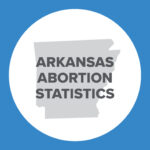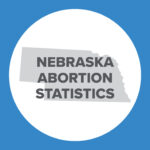Abortion Reporting: Michigan (2019)
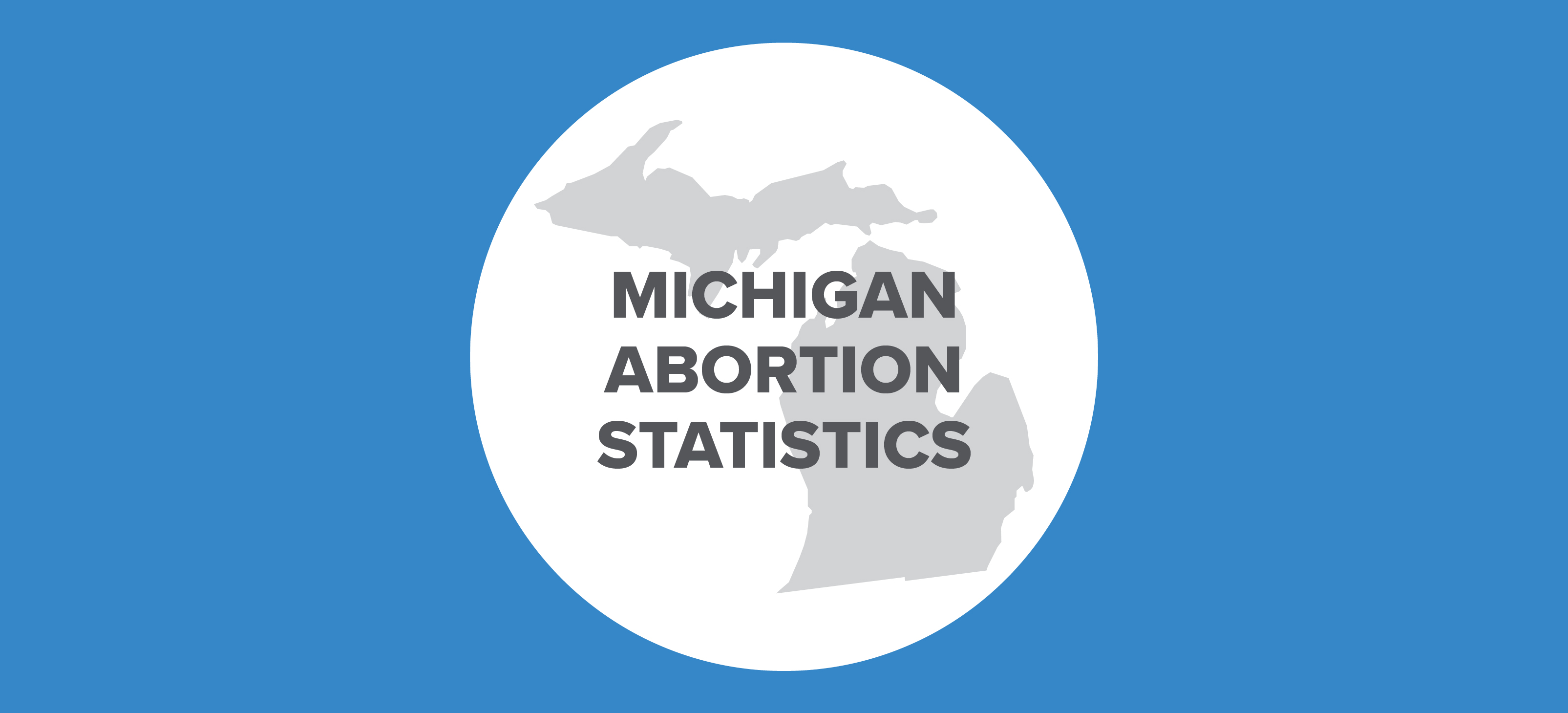
Michigan’s 2019 abortion statistics have been published on the website of the Michigan Department of Health and Human Services. The report shows that abortions increased from 2018.
Changes in Michigan Abortions, 2018-2019

Information on Planned Parenthood’s Michigan abortion market share is not included in the report.
Abortion Totals and Trends
There were 27,339 abortions reported in Michigan in 2019, up two percent from the previous year (Fig. 1). Chemical abortions jumped by 14 percent from 10,220 in 2018 to 11,609 in 2019, making up 42 percent of the total in 2019. The Charlotte Lozier Institute (CLI) estimates that Michigan’s 2019 abortion rate was 14.5 abortions per 1,000 women ages 15-44, an increase of two percent from the prior year and higher than the national rate (Fig. 2).
State Report Summary
Abortions on Michigan Residents
In 2019, 25,902 of the 27,339 abortions reported in Michigan (95 percent) were performed on state residents. Much of the demographic information in the report is for resident abortions only. Twenty-seven percent of the abortions performed on Michigan residents were on women ages 20 to 24, and 32 percent were on women ages 25 to 29. Nineteen percent were on women in their early thirties, dropping to nine percent on women in their later thirties. Three percent of the abortions were on Michigan residents age 40 or older, and nine percent were on girls under the age of 20.
Black women composed the majority (51 percent) of Michigan women undergoing abortions in 2019, while 40 percent of the abortions were performed on white women. Two percent of the abortions were on Asian or Pacific Islander women, and another two percent were on women of other races. One percent were on multiracial women, and half a percent on Native American women. Race was unknown for three percent of the women undergoing abortions. CLI estimates that in 2019, the black abortion rate of 41.2 abortions per 1,000 women of childbearing age was nearly six times the white rate of 7.2.
A large majority of Michigan resident abortions, 85 percent, were on unmarried women. Ten percent were on married women and not quite six percent on women of unknown marital status. Women were asked to share who had referred them to the abortion facility, and 90 percent reported that they had referred themselves. Six percent were referred by friends or family, two percent by a physician, and another two percent by some other source. Fourteen women were referred to the abortion facility by a family planning agency. Eight women received referrals from health departments, seven from clergy, and four from social agencies. Forty women did not report how they were connected with the abortion facility.
Most of the Michigan residents undergoing abortions in Michigan in 2019 had already experienced pregnancy. Twenty-six percent had one previous term pregnancy of at least 37 weeks, and 39 percent had two or more. However, over half had no previous abortions (51 percent), while a quarter had one prior abortion and 24 percent had more than one. Twenty-three percent had previously suffered a miscarriage.
Ninety-four percent of the Michigan women paid for their abortions themselves. Five percent were covered by insurance. The report does not indicate whether any of the abortions were funded by Medicaid due to rape, incest, or a risk to the mother’s life. Method of payment was not reported for 66 abortions.
All Abortions Occurring in Michigan
In addition to the information reported just for abortions on resident women, Michigan reports on all abortions occurring in the state. In 2019, the majority of the abortions performed in Michigan, 87 percent, occurred at 12 weeks of gestation or earlier. One percent were performed earlier than five weeks, 64 percent from five to eight weeks of gestation, and 22 percent between nine and 12 weeks. Eight percent of the abortions were performed between 13 and 16 weeks and three percent between 17 and 20 weeks of gestation. There were 353 abortions, 1.3 percent of the total, reported at 21 weeks of gestation or later. Of these, 349 were performed between 21 and 24 weeks, three from 25 to 28 weeks, and one after 28 weeks of gestation. Fifty-eight abortions occurred at unknown gestational ages.
Fifty percent of the abortions were performed using suction curettage, a first-trimester abortion procedure. Forty-two percent were chemical abortions, and eight percent were performed using dilation and evacuation, which is typically used in the second trimester. There was one dilation and curettage abortion, four abortions performed using other procedures, and 51 abortions for which the methods were unknown.
For 93 percent of the abortions, pregnancy was confirmed via ultrasound. Five percent of the pregnancies were confirmed using a home pregnancy test and two percent using a lab urine test. Before 41 of the abortions, pregnancy was tested using a lab blood test. In 11 cases pregnancy was not tested, in five instances pregnancy was confirmed using some other means, and in 18 cases the method of confirming pregnancy was not reported.
Six percent of the unborn babies killed by abortion were reported to weigh between one and 99 grams. Three percent weighed between 100 and 399 grams, and a little over half a percent weighed 400 grams or more (14 ounces). Weight could not be determined for 91 percent of the babies. Most of the abortions reported in Michigan, 91 percent, occurred in freestanding abortion facilities. Three percent were performed in doctor’s offices, and a little over half a percent were performed in hospitals. Five percent were performed in some other type of facility.
There were six reported complications1 identified at the time of the abortion procedure; multiple complications could be reported for each abortion. There were two instances of shock, three cases of hemorrhaging, and one infection. Additionally, 67 reported complications1 were identified and treated after the abortion. Of these, there were 30 cases of retained products of conception, 11 instances of hemorrhaging, three uterine perforations, and two infections. Twenty-one unspecified complications were also reported.
Dilation and Evacuation
In 2019, there were 2,076 dilation and evacuation abortions reported in Michigan. Dilation and evacuation, also known as dismemberment abortion, is the most commonly used second-trimester abortion method. However, there were 1,292 suction curettage abortions reported to have been performed in the second trimester, when it is unlikely that suction alone would have been sufficient to complete the abortion due to the development of the unborn baby. Three of the suction curettage abortions were reported to have been performed between 25 and 28 weeks of gestation, or around six months. CLI contacted the health department for clarification, but the health department confirmed for CLI that all these suction curettage abortions were indeed reported in the second trimester and that only one second-trimester suction curettage abortion was performed using multiple methods. It is possible that some of these abortions reported as suction curettage procedures were actually dilation and evacuation procedures.
State Ranking
In 2016, CLI evaluated abortion reporting across the country, and Michigan’s reporting tied for 7th best. To improve its reports, Michigan could validate its data to ensure that the correct abortion procedures and gestational ages are reported. Additionally, Michigan could report all data for all abortions occurring in the state rather than reporting demographic data for only resident abortions. Michigan could also identify the states from which women travel to obtain abortions in Michigan.
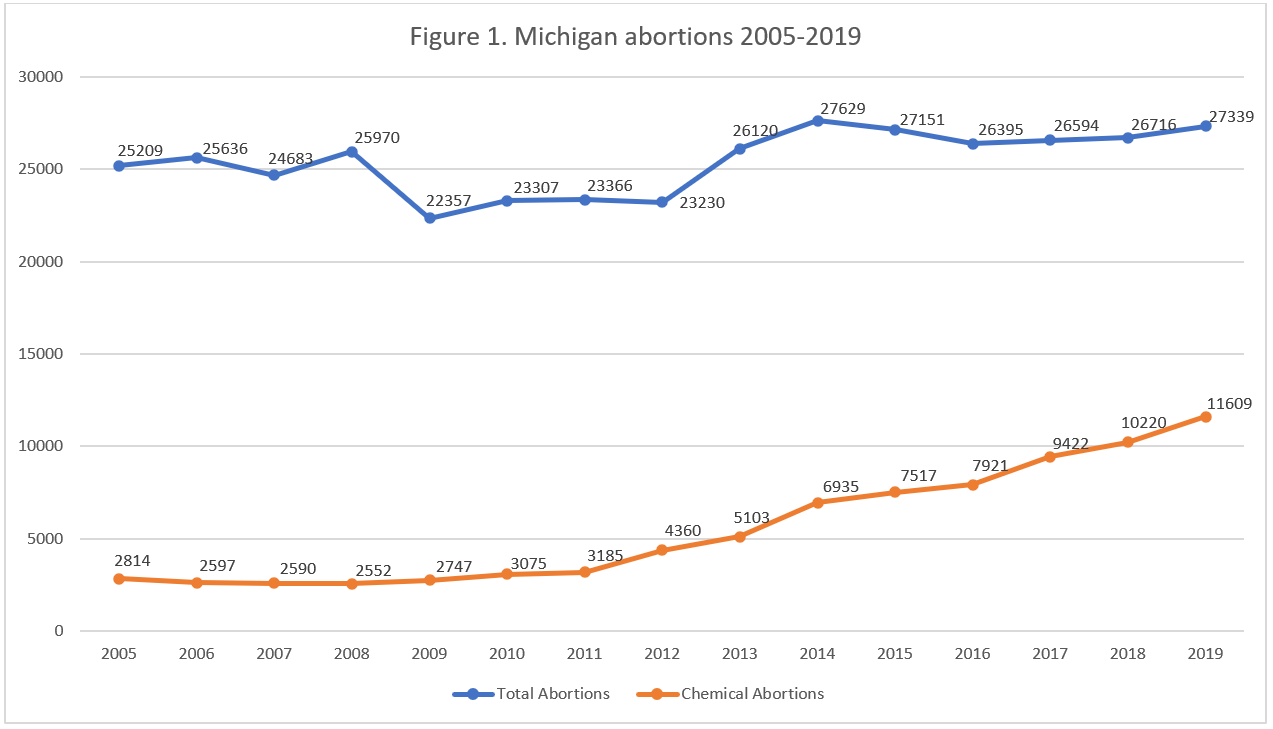
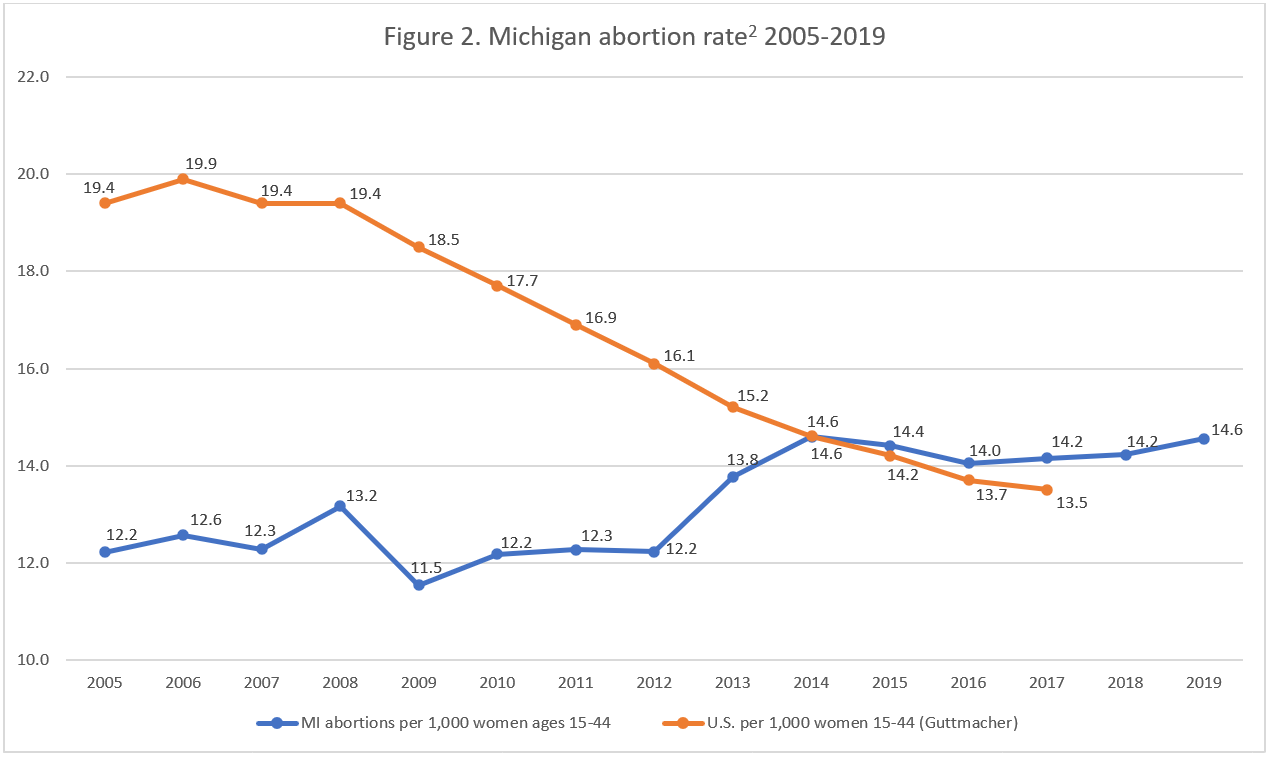
- Statistics on abortion complications reported here represent a minimal number of deaths and complications, as this data is collected in a non-systematic and non-verifiable way. As such, this data cannot be used to calculate either an accurate abortion mortality rate or an accurate abortion complication rate for the state.
- Rates were calculated by CLI using population estimates from the United States Census Bureau. The rates were calculated using the following formula: (total number of abortions performed in Michigan ÷ number of resident women ages 15-44) x 1,000. Rates may differ slightly from previous CLI articles due to revised population estimates.






















